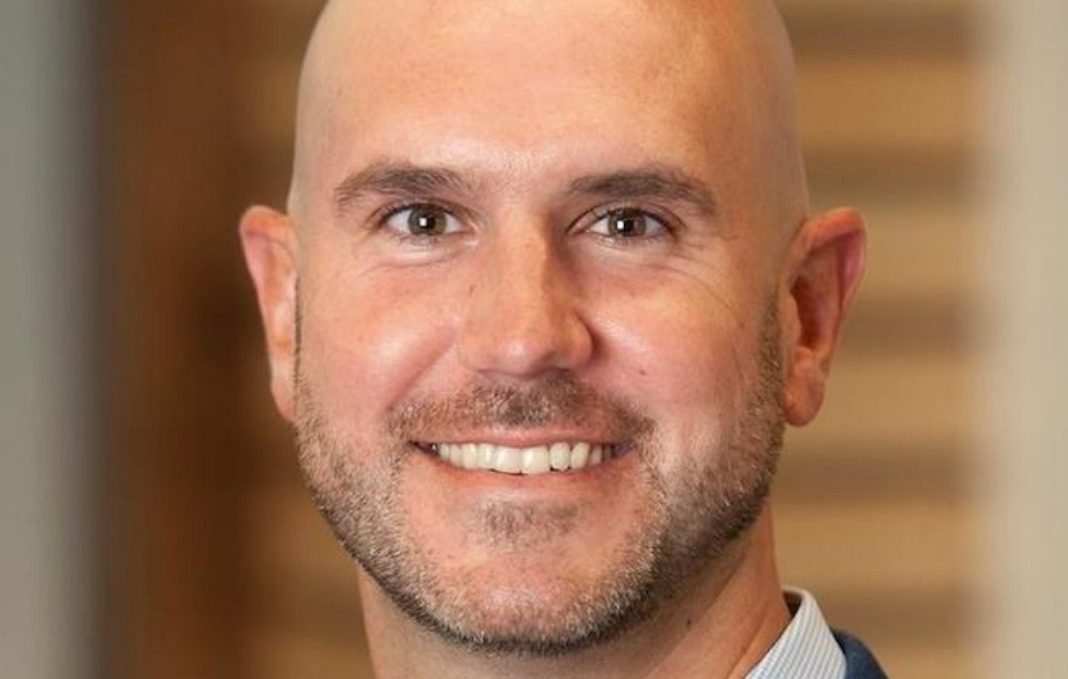


Josh Dickinson takes over as CFO and senior vice president of Schneider Electric’s North American region understanding that, while his non-accounting background and broadening purview will take him into everything from strategic M&A to talent management, he can’t lose track of cash management or of the “golden screw.”
You know—that one tiny component whose lack of availability can still mess things up mightily for an $8.8 billion organization that manufactures a huge variety of electrical components and helps companies with their own digital transformations with energy systems.
“I don’t have my CPA, I don’t have a heavy background in accounting, but in business partnership,” says Dickinson, who began his career at Schneider in 2015 as controller and CFO for the company’s U.S. industry division after stints at four Fortune 500 companies and at a private equity carveout of Caterpillar Logistics Services.
“So attracting, developing and retaining talent is one reason I’m in this role. I’m ultimately responsible for 400 to 600 people in our North American finance organization, so picking leaders who embody our culture and values is important. I can’t do anything on my own. It’s the team that executes strategy.”
Globally, Schneider is headquartered in Rueil-Malmaison, France, with worldwide markets for products that include PLCs, motor starters, drives, circuit breakers, switches, transformers and substations and for related services such as providing energy and automation digital solutions that optimize efficiency and sustainability for customers.
As a supplier of industrial goods as well as bits and bytes to run them, the company has continued to face supply-chain challenges, and it’s up to Dickinson to help balance those contingencies with the needs of both the customer and Schneider Electric. “The challenges we’re facing as an industry aren’t so much a demand issue as a supply-chain issue,” he says. “We really still have a short-term focus on supply-chain recovery. Customers come first. Inventories need to be in place, while managing cash.”
That requires “a culture of agility,” Dickinson explains. Schneider has faced big challenges “when suppliers aren’t meeting their lead times to you and you don’t have visibility to that,” he says. “That has been a struggle. There are things we have become accustomed to getting, and quickly—elements we call ‘the golden screw.’ We have businesses that manufacture complex systems, and there are times we have everything in the plant except that one component. But until you have it, you can’t ship.
“These are things that typically wouldn’t be a bottleneck in the supply chain, but because of the challenges of the China lockdown and supply chain, they’ve become globalized versus just regionalized. All of our competitors and we are recovering in different areas at different paces, and we are in a race.”
As a result of this emphasis, he says, Schneider has adjusted in part by “delivering an almost complete system without that component and then add it at a later date.” Also, Schneider has “made strategic investments in inventory to improve our ability to recover more quickly. But that does require cash. For sure, as inventory enables us to eliminate golden screws, the shipment will follow and cash comes back in. We’re excited about our backlogs and our profitability and our ability to get back to more normal inventory levels. It hasn’t been ‘customer first’ at all costs, but there has been a shift.”
At the same time, Dickinson is helping provide leadership on a broader front as the company invests significantly more in localized production in North America, including the construction of three new plants. “That is a huge focus,” he says. “That will allow us to be quicker to react when China continues to shut down ports. We’ll have an increased amount of golden screws.”
Dickinson says that Schneider is always operating on “a pendulum between globalization and regionalization. We never get all the way to one or the other. We’ve seen multiple cycles. For Schneider right now, it makes sense both in the short term and the long term to have more manufacturing capacity in North America, and part of the reason is our growth and potential. We’re not just shifting higher percentages [to U.S. production] but also continuing to increase our capacity as our business grows in North America.
“Our conviction is based on our growth, capacity, talent in the region, our ability to automate in the region and make those operations more efficient. A lot of things in the past were done outside the U.S. because of labor costs, but the more we automate plants, the less that is an issue.”
Dickinson also is helping tend to resource management in other important areas. The company purchased the portion of Aveva it didn’t own in a $12 billion takeover of the British software giant whose conclusion was announced in November, after Schneider began an acquisition process in 2017 and already had a 60% stake.
“That takes cash,” Dickinson says. “We’re managing our short-term needs with a global long-term strategy, and even the decision to make that [acquisition] at the time we did forces all of us to look at recovery in a new way about cash management around inventories. As priorities happen, we need more responsiveness and the ability of our global team to adapt and optimize opportunities for short-term needs and to enable the best long-term outcome too.”
And then there’s hiring. Dickinson’s global expansion means the company needs to continue to hire in many areas, but “in the short term, we’re restricting some hiring,” he says. “A huge part of our costs are people.”
Schneider also is “being more proactive and strategic, having the discipline to hold off on some investments.” This includes “constantly looking at our portfolio management in microenvironments so we can afford to go and invest in those things that are most strategic, with a long-term focus.”
Dallas-based Dickinson has held other CFO positions within Schneider North America as well as served as the finance business partner to the U.S. country president, Aamir Paul. He also oversaw the design and execution of the transformation of the North American finance function as part of the global company’s reorientation of the function. So he’s been priming for larger responsibilities with a changing portfolio for some time.
Yet Dickinson says he must “retain and refocus on governance and compliance and tax and accounting strategy just as robustly as on business strategy. Being publicly held, it’s incredibly important that the finance functions are robust.”
And, Dickinson says, Schneider emphasizes a highly collaborative culture that brings all functional areas to bear around decisions such as boosting regional manufacturing and adjusting supply chains. “I can’t do anything on my own,” he says. “It’s our team that is executing the strategy.”




Chief Executive Group exists to improve the performance of U.S. CEOs, senior executives and public-company directors, helping you grow your companies, build your communities and strengthen society. Learn more at chiefexecutivegroup.com.
0

1:00 - 5:00 pm
Over 70% of Executives Surveyed Agree: Many Strategic Planning Efforts Lack Systematic Approach Tips for Enhancing Your Strategic Planning Process
Executives expressed frustration with their current strategic planning process. Issues include:
Steve Rutan and Denise Harrison have put together an afternoon workshop that will provide the tools you need to address these concerns. They have worked with hundreds of executives to develop a systematic approach that will enable your team to make better decisions during strategic planning. Steve and Denise will walk you through exercises for prioritizing your lists and steps that will reset and reinvigorate your process. This will be a hands-on workshop that will enable you to think about your business as you use the tools that are being presented. If you are ready for a Strategic Planning tune-up, select this workshop in your registration form. The additional fee of $695 will be added to your total.

2:00 - 5:00 pm
Female leaders face the same issues all leaders do, but they often face additional challenges too. In this peer session, we will facilitate a discussion of best practices and how to overcome common barriers to help women leaders be more effective within and outside their organizations.
Limited space available.

10:30 - 5:00 pm
General’s Retreat at Hermitage Golf Course
Sponsored by UBS
General’s Retreat, built in 1986 with architect Gary Roger Baird, has been voted the “Best Golf Course in Nashville” and is a “must play” when visiting the Nashville, Tennessee area. With the beautiful setting along the Cumberland River, golfers of all capabilities will thoroughly enjoy the golf, scenery and hospitality.
The golf outing fee includes transportation to and from the hotel, greens/cart fees, use of practice facilities, and boxed lunch. The bus will leave the hotel at 10:30 am for a noon shotgun start and return to the hotel after the cocktail reception following the completion of the round.